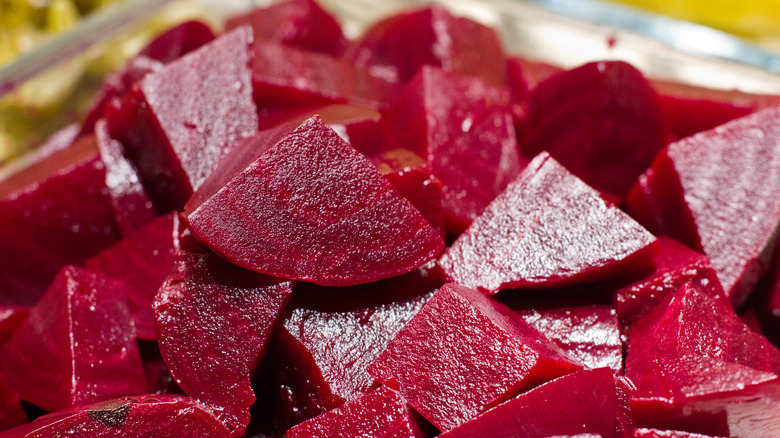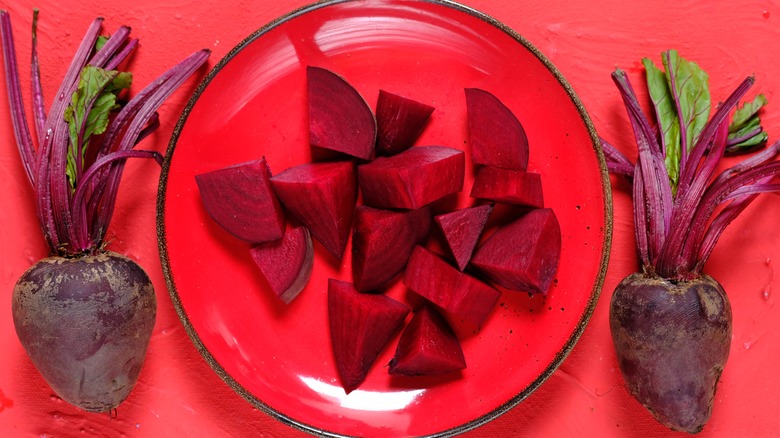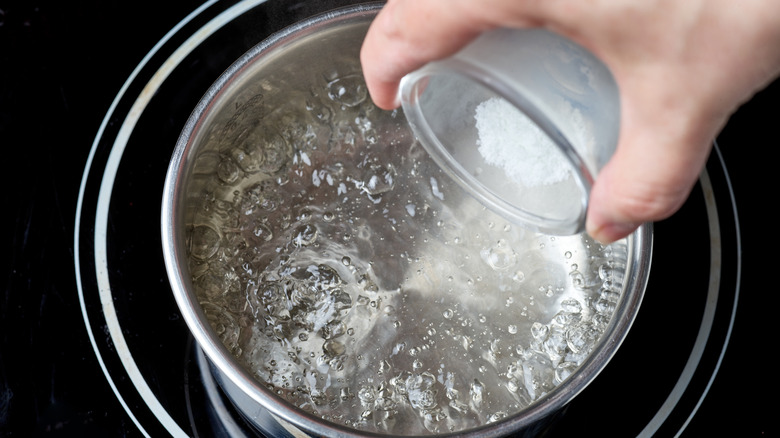The Tangy Beet Dish That May Have Been Inspired By Harvard
You may have unpleasant memories of fresh-from-the-can beetroot being passed around the family dinner table as you knew you'd be encouraged to take some. Or, you may remember trying a pickled beet for the first time and feeling your mouth pucker. If you've had a past negative experience trying the earthy root vegetable, you're not alone. Beets are a divisive veggie, to say the least. In fact, a 2019 poll found that beets were the second most hated vegetable in America.
Regardless of this beet slander, we're here to defend the humble root vegetable. Like most veggies, eating beets straight from the can — or the ground — with no seasonings will never yield the tasty results you may have been hoping for unless you're Dwight Schrute. While you can try roasting your beets or hiding them in a salad, Harvard beets may just be the answer. Both tangy and sweet, this recipe features beets covered in a delectable sauce that even the pickiest of eaters could enjoy. And, with a mysterious history, this dish can even act as a conversation piece at dinner time.
Origin of Harvard beets
This long-adored traditional dish has been around for decades, however, little is known about its exact origins. Judging by the name, many might assume that Harvard beets are directly connected to the prestigious Massachusetts university, and those assumptions may not be entirely wrong. One theory about how this dish got its name ties directly back to Harvard, specifically the school's official colors. Legend says that the dish was named after Harvard University decided that its famous beet-like crimson red would be the school's official color in the early 20th century. Others say that it was invented by a student at the university.
However, other ideas about this dish believe it did not even originate in America. According to New England Today, some say that Harvard beets were invented in an English tavern that was named "Harwood." After the dish migrated to America, it was mispronounced, and people started to call the dish Harvard rather than its proper name.
Other theories about both the dish's origins and namesake still circulate, but it's likely Harvard beets will remain one of dinner's more mysterious side dishes.
Ingredients in Harvard beets
Don't worry, beet-haters; giving this dish a chance may just change your opinion of this underrated root vegetable forever. Harvard beets have an entirely different flavor than simply boiled and served; they're coated with a tasty sauce that is sure to keep you reaching for more.
The beets can either come from a can or fresh from a garden. They're usually pre-sliced to make sure they soften during the cooking process. They are then coated in a tangy sauce made of water, vinegar, sugar, and cornstarch (for thickening purposes.) The beets are boiled in this mixture and, likewise, infused with these flavorings. Butter, salt, and pepper are also added in before serving to add some flavorful fat and seasoning to the final product.
So, if you're looking for an easy side dish that can be thrown together with minimal effort, then look no further than this classic recipe.
How Harvard beets are made and served
The prep time for this recipe is short and sweet, just like the final saucy results of this recipe. Measure out 3/4 cup of sugar, 1/2 cup of white vinegar, 1/2 cup of water, and 4 teaspoons of cornstarch. Once the ingredients are measured out, the first step is to simply combine them in a saucepan and bring the mixture to a boil. Then, some chopped beets can be tossed in and simmered until adequately softened. Once cooked, butter, salt, and pepper can be stirred in for additional flavor. The final results will yield soft beets smothered in a delightfully tangy, fatty, and sweetened sauce that almost no one can pass up.
This dish can be served either warm or cold. If they're being served warm, the beets are great to pair with a meaty main course, whether that's some tender steak, roasted chicken, or pork. Even a salmon filet can go nicely with the beets. However, if the chilled version is preferred, the beets can be spooned over a fresh salad or even eaten alone.



